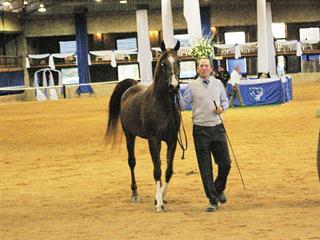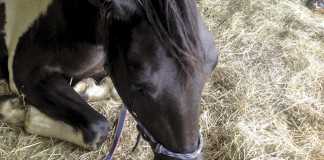
Your body and mind have to be sharp and fit no matter what event you and your horse enter. When there are big competitions ahead, it’s essential that you stay focused.
The competitor who lacks concentration or the willingness to learn won’t get far. And the most important thing to learn is that everything in the competitive arena should be approached in a lighthearted manner, with good humour and, above all, good sportsmanship.
If you prefer a good-looking horse to a plain one, then showing might be the discipline for you. Now of course everyone thinks their horse is pretty, well-behaved and has wonderful movement, but showing a horse is a different story.
Show basics
There are many different show categories for horses and ponies, and for the latter there are different height classes based mainly on conformation and various paces.
The “working” pony class is where they are tested on performance, including the ability to jump various fences. Different breeds have different classes and they can be shown in-hand or under saddle. Working hunters and show hunters also have their own classes.
Finding a top class pony or horse can be very difficult and expensive. A show horse must have a pleasing appearance, be well-mannered and look beautiful and elegant when it moves. Conformation and presence are very important. The hack as a type of show horse had its origins in the days when it was fashionable to ride in the town streets and parks. The horse was constantly on view or show to the general public.
It needs an indefinable presence so that it will be truly eye-catching. Hacks aren’t a specific breed, in fact they’re usually cross-breeds which have inherited all their parents’ good qualities.
Horses and ponies that are shown in-hand rather than under saddle can be any breed, and this is an excellent way to introduce young horses to the demands and disciplines of the show ring.
Classes range from heavy horses to small, light-framed horses with special classes for brood mares and foals.
Judging is based on conformation and type, and placing is bound to depend on the individual preferences of judges.
Training a horse
Start with a six-week legging up programme. With patient training and exercise on the lunge, your horse will be more supple and will have the space to move forward freely.
It’s very important that you take your horse out for gentle hacks to help relax its mind, especially with some “horsey” friends.
A good instructor will be honest with you and will tell you whether or not you have the right type of horse to show. Find someone who has a good eye for a show horse, as very often an unkind word from a person with careless judgment can stop an excellent show horse from ever entering the show ring.
It’s particularly important that show horses and ponies have a good, impressive walk. It can be developed only if the horse really has had his hocks under him so the forehand is lightened.
Presentation of a show horse or pony can make the world of difference. The horse must be trimmed clean at the heels and around the muzzle and groomed to shining perfection. All white markings need to be spotless. Where to start? As with every discipline, the best place to start is as a spectator. Talk to the people at the shows, then find the class you enjoy the most.
If you love beautiful horses and enjoy training them, this is definitely a discipline to consider.












